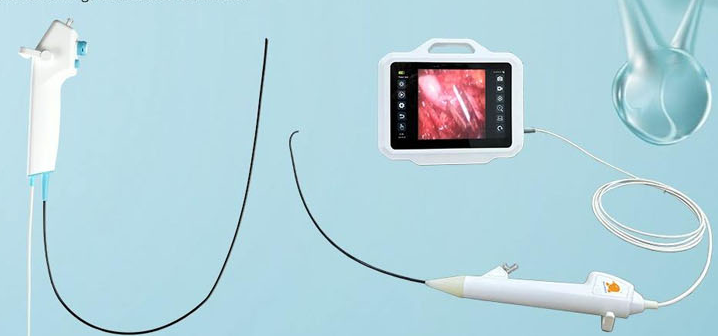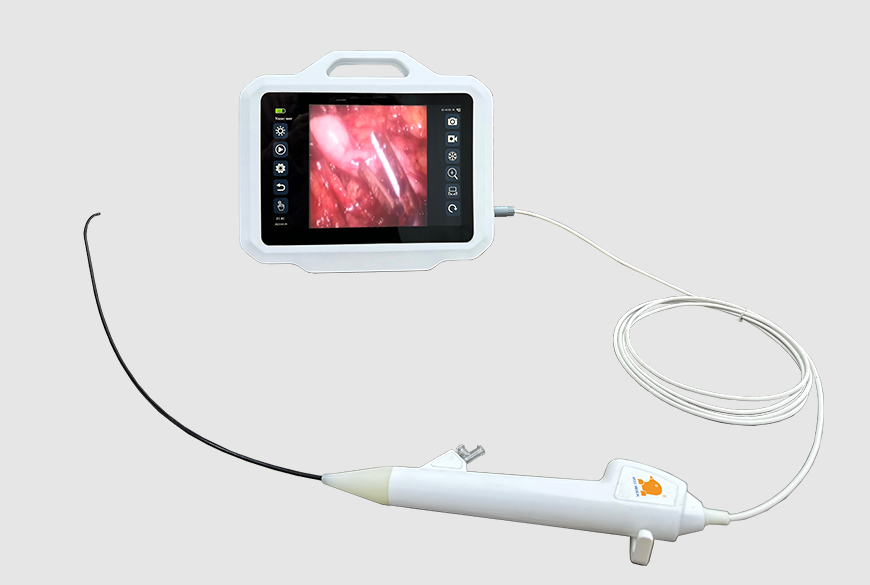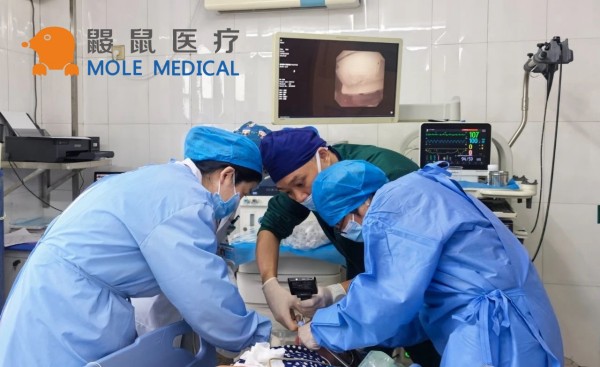Exploring 6 Flexible Ureteroscope Uses: A Dive into Now
Nov 11, 2024
In the realm of modern medicine, technological advancements have dramatically transformed diagnostic and therapeutic procedures, enhancing both accuracy and patient outcomes. Among these innovations, the flexible ureteroscope stands out as an indispensable tool in the field of urology. This sophisticated instrument is designed to navigate the intricate anatomy of the urinary tract, allowing healthcare professionals to conduct detailed examinations and interventions with remarkable precision.

The flexible ureteroscope’s versatility opens up new avenues for patient care, enabling urologists to address a wide range of conditions effectively. By utilizing this advanced technology, clinicians can diagnose issues such as kidney stones, tumors, and strictures with enhanced visual clarity. But what exactly are its specific uses, and how can it improve medical practices? This blog delves into six key applications of flexible ureteroscopes, exploring their significance and effectiveness in various clinical scenarios. From minimally invasive diagnostics to cutting-edge treatment options, flexible ureteroscopes not only enhance the capabilities of healthcare providers but also contribute to better patient experiences and outcomes. As we explore these uses, it becomes clear that this innovative tool is shaping the future of urological care in profound ways.
1. Diagnosis of Urinary Tract Disorders
Comprehensive Visual Examination
Flexible Ureteroscope Uses 1: Flexible ureteroscopes play a crucial role in diagnosing urinary tract disorders. With their high-definition imaging capabilities, these instruments provide detailed visuals of the urethra, bladder, ureter, and renal pelvis. The advanced processing algorithms enhance image quality through contrast adjustment and noise reduction, allowing urologists to make accurate assessments.
Targeted Pathology Detection
These devices are essential for identifying conditions such as stones, tumors, and strictures within the urinary tract. The wide field of view—typically around 120 degrees—allows clinicians to visualize a broader area in a single glance. This comprehensive examination aids in early detection and intervention, significantly improving patient outcomes.
Minimally Invasive Approach
Using a flexible ureteroscope for diagnosis often eliminates the need for more invasive procedures. By navigating through the urinary tract with minimal discomfort, this tool reduces recovery times and enhances patient comfort, making it a preferred choice for both patients and healthcare providers.
2. Kidney Stone Management
Precision in Navigation
Flexible Ureteroscope Uses 2: One of the standout uses of flexible ureteroscopes is in kidney stone management. The exceptional bending capabilities—up to 275 degrees—enable these instruments to maneuver through the intricate pathways of the urinary tract. This flexibility is vital for accessing stones located in challenging positions.
Direct Access and Fragmentation
Once positioned accurately, the flexible ureteroscope allows urologists to perform procedures like laser lithotripsy, where stones are fragmented into smaller pieces for easier removal. This direct access not only enhances the efficiency of the procedure but also improves the chances of complete stone clearance, minimizing the likelihood of recurrence.
Improved Patient Comfort
The minimally invasive nature of flexible ureteroscopy means that patients experience less discomfort and quicker recovery. Many patients can return to normal activities within a few days, making this an appealing option compared to traditional open surgeries.
3. Treatment of Urinary Tract Tumors
Early Detection and Intervention
Flexible Ureteroscope Uses 3: Flexible ureteroscopes are instrumental in the detection and treatment of urinary tract tumors. The high-resolution imaging capabilities facilitate the identification of suspicious growths, allowing for timely intervention.

Biopsy and Resection
During a flexible ureteroscopy, urologists can perform biopsies of tumors to obtain tissue samples for analysis. Additionally, the instrument can be used for tumor resection, providing a minimally invasive alternative to traditional surgical methods. This approach can significantly reduce recovery times and hospital stays for patients.
Continuous Monitoring
For patients with a history of urinary tract tumors, flexible ureteroscopes allow for regular surveillance. The ability to visualize the urinary tract repeatedly ensures that any new growths can be detected early, further enhancing patient management.
4. Treatment of Urinary Tract Strictures
Identifying and Treating Narrowed Pathways
Flexible Ureteroscope Uses 4: Urinary tract strictures—narrowed areas within the urethra or ureters—can lead to serious complications if left untreated. Flexible ureteroscopes enable physicians to visualize these strictures accurately and assess their severity.
Dilation Techniques
Once identified, urologists can employ dilation techniques using the flexible ureteroscope to widen the narrowed passage. This procedure can significantly relieve symptoms and improve urine flow, enhancing the patient’s quality of life.
Post-Treatment Monitoring
Following dilation, flexible ureteroscopy allows for ongoing monitoring of the treated area. Regular follow-ups ensure that any re-narrowing can be addressed promptly, preventing complications and ensuring optimal patient outcomes.
5. Laser Therapies
Advanced Treatment Options
Flexible Ureteroscope Uses 5: Flexible ureteroscopes are compatible with various laser technologies, making them invaluable in modern urological treatments. Procedures such as Holmium laser lithotripsy utilize these instruments to target and break down stones with precision.
Versatility in Application
The ability to combine flexible ureteroscopy with laser therapies extends its applications beyond stone removal. Urologists can also treat tumors and strictures using laser ablation techniques, further showcasing the flexibility of this instrument in managing a range of urological conditions.
Enhanced Safety and Efficacy
The precision of laser treatments, combined with the advanced imaging provided by flexible ureteroscopes, enhances the safety and efficacy of procedures. The risk of damage to surrounding tissues is minimized, leading to better outcomes and faster recovery for patients.
6. Education and Training
Hands-On Learning Opportunities
Flexible Ureteroscope Uses 6: Flexible ureteroscopes are increasingly being used in medical education and training programs. The realistic imaging and maneuverability of these devices provide an excellent platform for teaching urological techniques to medical students and residents.

Simulation of Complex Scenarios
Training with flexible ureteroscopes allows learners to simulate complex clinical scenarios without risking patient safety. This hands-on experience is crucial for developing the skills necessary for successful clinical practice.
Continuous Professional Development
For established urologists, flexible ureteroscopy training offers opportunities for continuous professional development. Learning the latest techniques and technologies ensures that practitioners remain at the forefront of their field, ultimately benefiting patient care.
Conclusion: A Game-Changer in Urology
The flexible ureteroscope is a remarkable tool that has transformed the landscape of urological practice. From diagnosing complex urinary tract disorders to providing minimally invasive treatment options, its versatility is undeniable. As healthcare continues to evolve, the adoption of advanced technologies like the flexible ureteroscope will undoubtedly enhance patient care and outcomes.
Supplier Spotlight: Mole Medical
For healthcare providers seeking reliable and innovative solutions, Mole Medical offers a range of high-quality flexible ureteroscopes. With features designed to ensure sterility, improve maneuverability, and enhance imaging capabilities, Mole Medical’s products are at the forefront of urological technology. Investing in such advanced tools not only benefits practitioners but ultimately leads to better patient experiences and outcomes.
Categories
Latest Articles

Disposable Nephroscopes: Redefining Safety & Efficiency in Urology
Introduction The shift towards minimally invasive urological surgery has found a pivotal ally: the disposable nephroscope. As traditional reusable scopes grapple with persistent biofilm contamination risks and soaring sterilization costs, the global medical community is rapidly adopting single-use solutions. This article analyzes the clinical value, technological evolution, and dynamic innovation landscape driving this transformative shift. ... Read more

Disposable Video Laryngoscope Blades: The Ultimate Solution for Preventing Cross-Contamination
In the operating room, as the cold light of a video laryngoscope illuminates a patient’s airway, an age-old medical challenge is being redefined: How can life-saving instruments avoid becoming vectors of infection? Jiangsu MoleMedical drives an innovative safety revolution—replacing reusable devices with single-use, sterile laryngoscope blades that create a pure barrier for critical airways. Traditional video ... Read more
-2.jpg)
FDA & CE Approved Video Laryngoscope: What Makes It Stand Out?
Introduction In high-pressure emergencies and precision-driven operating rooms, video laryngoscopy is revolutionizing airway management. Mole Medical’s FDA and CE-certified technology replaces tactile-dependent “blind intubation” with real-time visual navigation – enhancing safety, accuracy, and clinical outcomes worldwide. Why Certification Matters Mole Medical’s dual certifications validate its global compliance and performance: FDA Clearance: Rigorous validation of safety/efficacy ... Read more

Mole Medical Showcases Advanced Endoscopy Solutions at CMEF Autumn 2025, Driving Global Partnerships
Guangzhou, China – September 26-29, 2025 – The 92nd China International Medical Equipment Fair (CMEF Autumn) concluded successfully on September 29th at the Canton Fair Complex in Guangzhou. Mole Medical Technology Co., Ltd. (Mole Medical) made a significant impact at the event, drawing global medical professionals and partners to its booth (Hall 2.1, Stand Q24) ... Read more

How to Use Disposable Ureteroscopes Safely and Efficiently
In the field of urology, the application of disposable electronic ureteral-kidney pelvis endoscopy catheters is leading the technological innovation in minimally invasive surgeries. According to the 2024 multi-center research data from China’s urology department, among the over 5,000 surgeries included, the patient group using disposable catheters performed significantly better in key indicators such as operation ... Read more



